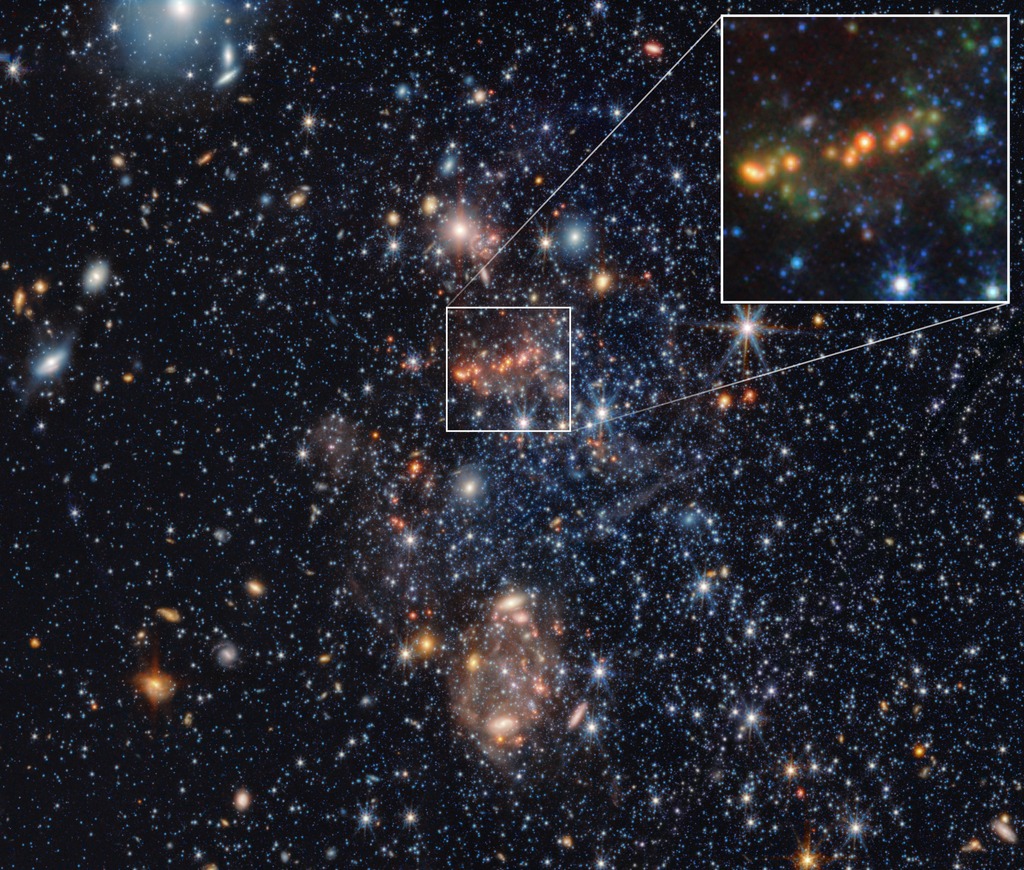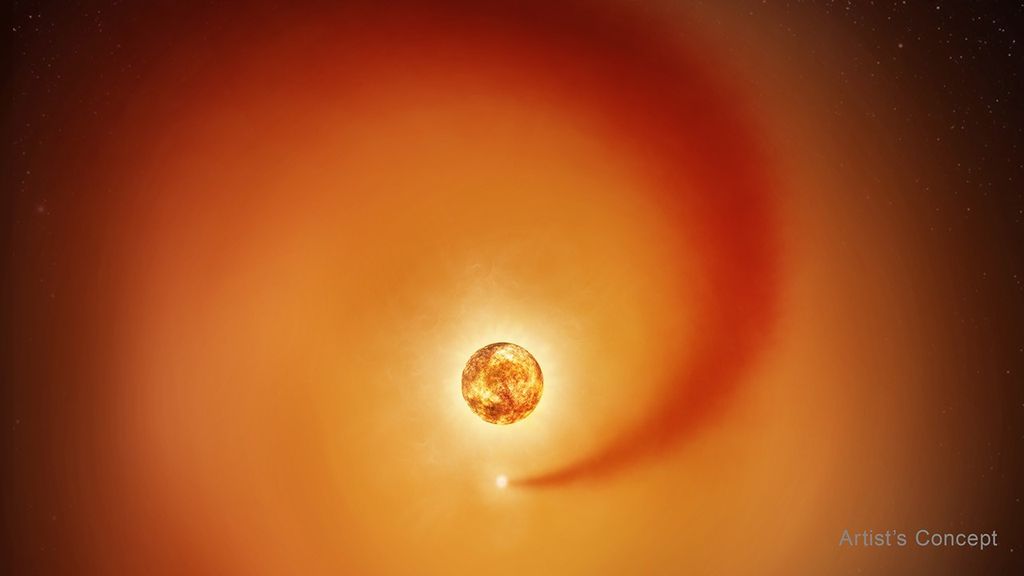1 min read
Webb’s Stunning Collection of 19 Face-On Spiral Galaxies
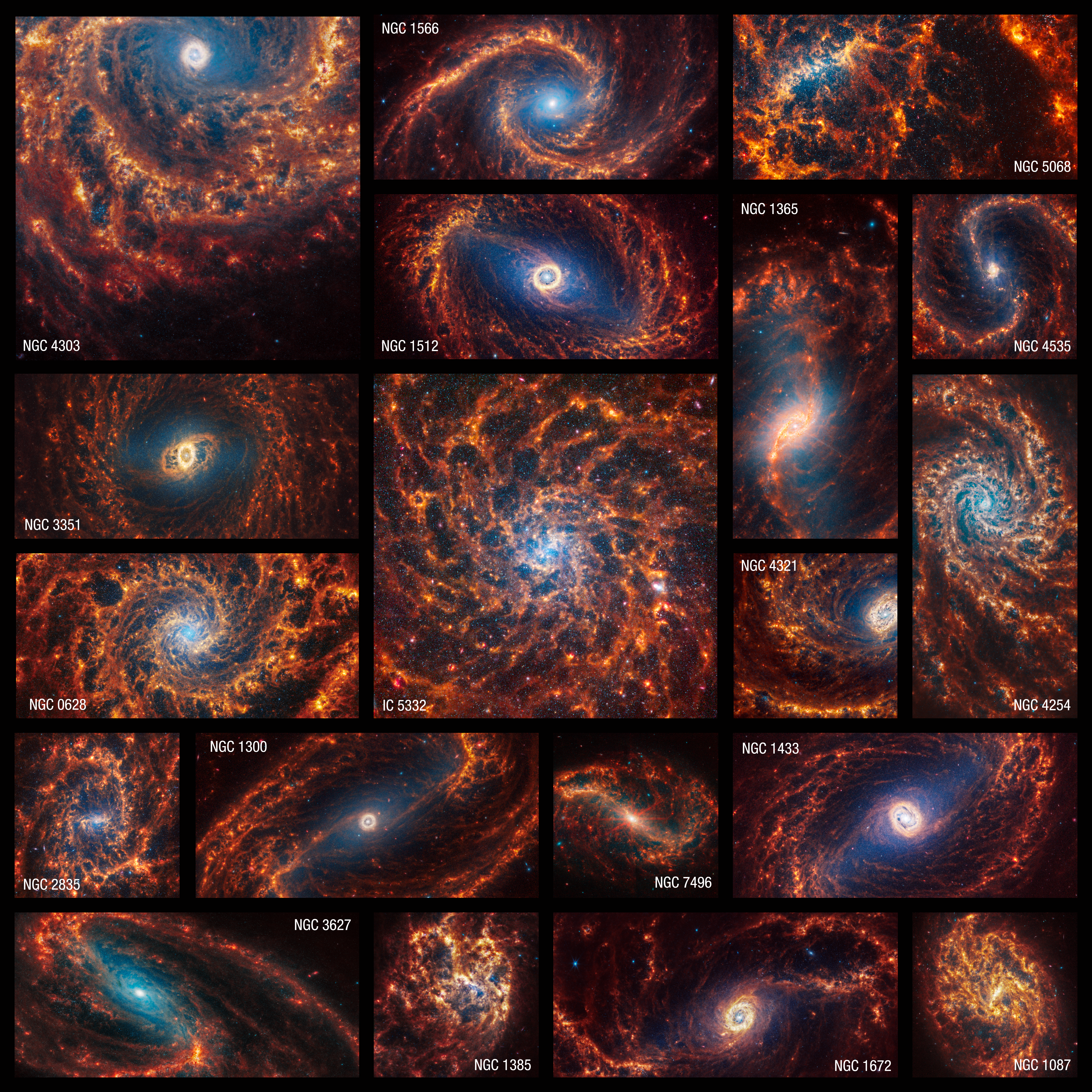
This collection of 19 face-on spiral galaxies from the James Webb Space Telescope in near- and mid-infrared light is at once overwhelming and awe-inspiring.
“Webb’s new images are extraordinary,” said Janice Lee, a project scientist for strategic initiatives at the Space Telescope Science Institute in Baltimore, Maryland. “They’re mind blowing even for researchers who have studied these same galaxies for decades. Bubbles and filaments are resolved down to the smallest scales ever observed, and tell a story about the star formation cycle.”
Webb’s NIRCam (Near-Infrared Camera) captured millions of stars in these images. Older stars appear blue here, and are clustered at the galaxies’ cores.
The telescope’s MIRI (Mid-Infrared Instrument) observations highlight glowing dust, showing where it exists around and between stars – appearing in shades of red and orange. Stars that haven’t yet fully formed and are encased in gas and dust appear bright red.
Webb’s high-resolution images are the first to show large, spherical shells in the gas and dust in such exquisite detail. These holes may have been created by stars that exploded and carved out giant regions in the interstellar material.
Another eye-catching detail? Several galaxy cores are awash in pink-and-red diffraction spikes. These are clear signs that these galaxies may have central active supermassive black holes or central star clusters.
These spiral galaxies are Webb’s first big batch of contributions to the Physics at High Angular resolution in Nearby GalaxieS (PHANGS) program, that includes existing images and data from NASA’s Hubble Space Telescope, the European Southern Observatory’s Very Large Telescope’s Multi-Unit Spectroscopic Explorer (MUSE), and the Atacama Large Millimeter/submillimeter Array (ALMA). With Webb’s images, researchers can now examine these galaxies in ultraviolet, visible, infrared, and radio light.
Explore side-by-side images of Webb and Hubble’s views of these 19 galaxies.
About the Data
- Data DescriptionData DescriptionProposal: A description of the observations, their scientific justification, and the links to the data available in the science archive.
Science Team: The astronomers who planned the observations and analyzed the data. "PI" refers to the Principal Investigator.This image was created with Webb data from proposal: 2107 (J. Lee). Image Processing: Joseph DePasquale (STScI).
- InstrumentInstrumentThe science instrument used to produce the data.NIRCam, MIRI
- FiltersFiltersThe camera filters that were used in the science observations.F2100W, F1130W, F1000W, F770W, F360M, F335M, F300M
- Object DescriptionObject DescriptionThe type of astronomical object.PHANGS Galaxies
- Release DateJanuary 29, 2024
- Science ReleaseNASA’s Webb Depicts Staggering Structure in 19 Nearby Spiral Galaxies
- CreditImage: NASA, ESA, CSA, STScI, PHANGS Team, Janice Lee (STScI), Thomas Williams (Oxford); Designer: Elizabeth Wheatley (STScI)

This image is a composite of separate exposures acquired by the James Webb Space Telescope using the NIRCam and MIRI instruments. Several filters were used to sample specific wavelength ranges. The color results from assigning different hues (colors) to each monochromatic (grayscale) image associated with an individual filter. In this case, the assigned colors are: Red = F2100W + F1130W + F1000W + F770WGreen = F770W + F360MBlue = F335M + F300M
Related Images & Videos
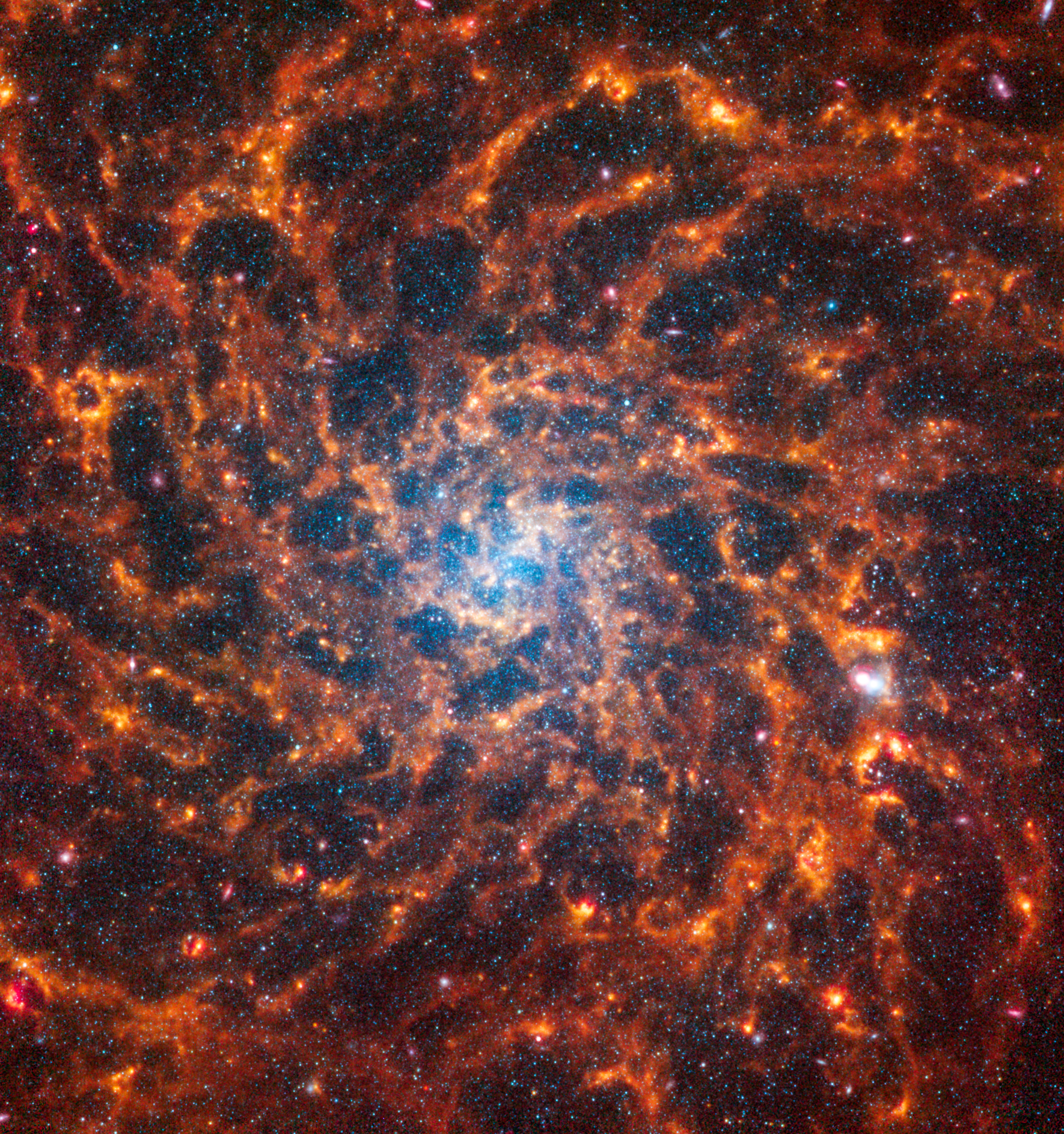
Webb and Hubble's Views of Spiral Galaxy IC 5332
Face-on spiral galaxy, IC 5332, is split diagonally in this image: The James Webb Space Telescope’s observations appear at top left, and the Hubble Space Telescope’s at bottom right. Webb and Hubble’s images show a striking contrast, an inverse of darkness and light. Why? Webb’s...
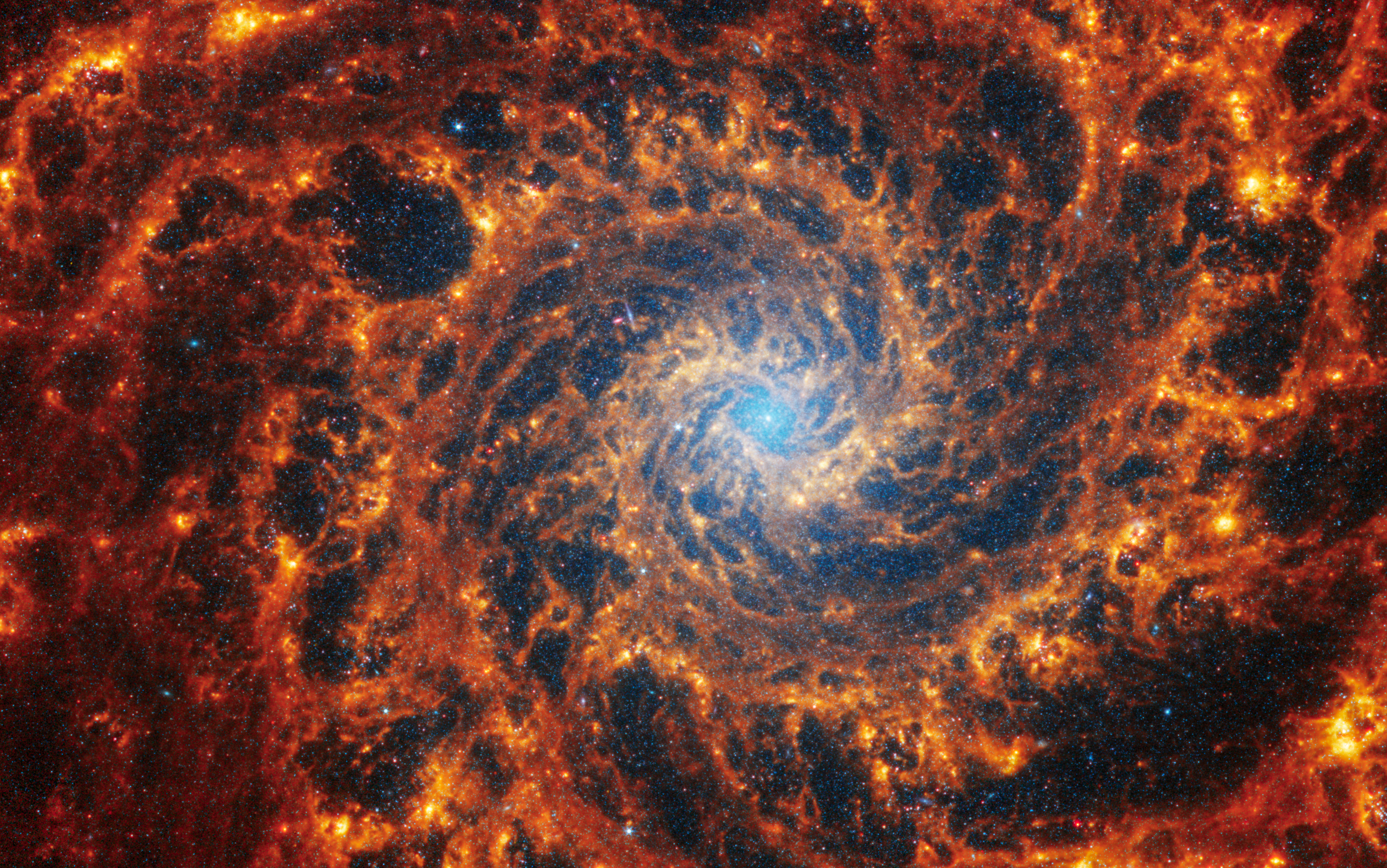
Webb and Hubble's Views of Spiral Galaxy NGC 628
Face-on spiral galaxy, NGC 628, is split diagonally in this image: The James Webb Space Telescope’s observations appear at top left, and the Hubble Space Telescope’s on bottom right. Webb and Hubble’s images show a striking contrast, an inverse of darkness and light. Why? Webb’s...
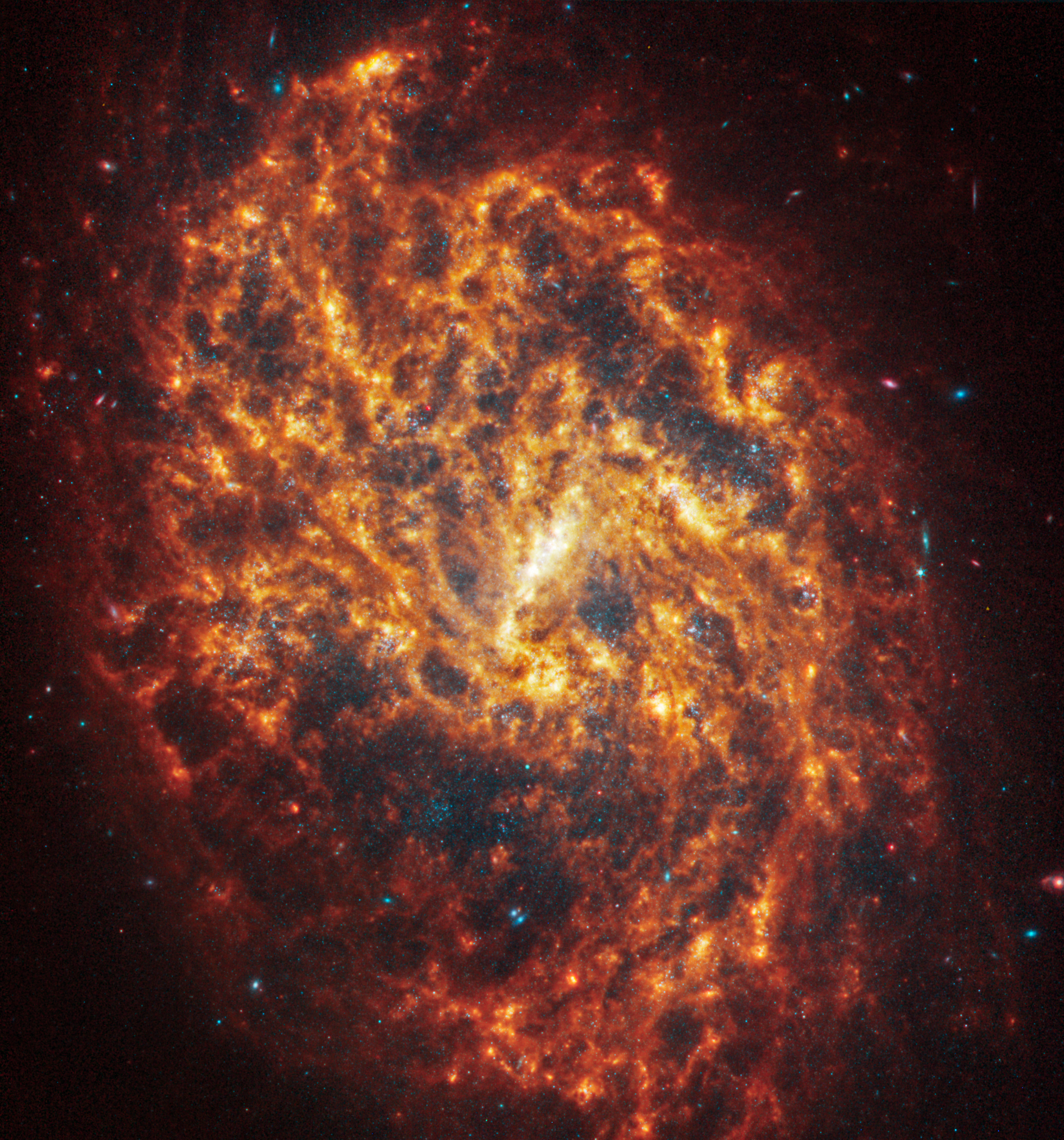
Webb and Hubble's Views of Spiral Galaxy NGC 1087
Face-on spiral galaxy, NGC 1087, is split diagonally in this image: The James Webb Space Telescope’s observations appear at top left, and the Hubble Space Telescope’s on bottom right. Webb and Hubble’s images show a striking contrast, an inverse of darkness and light. Why?...
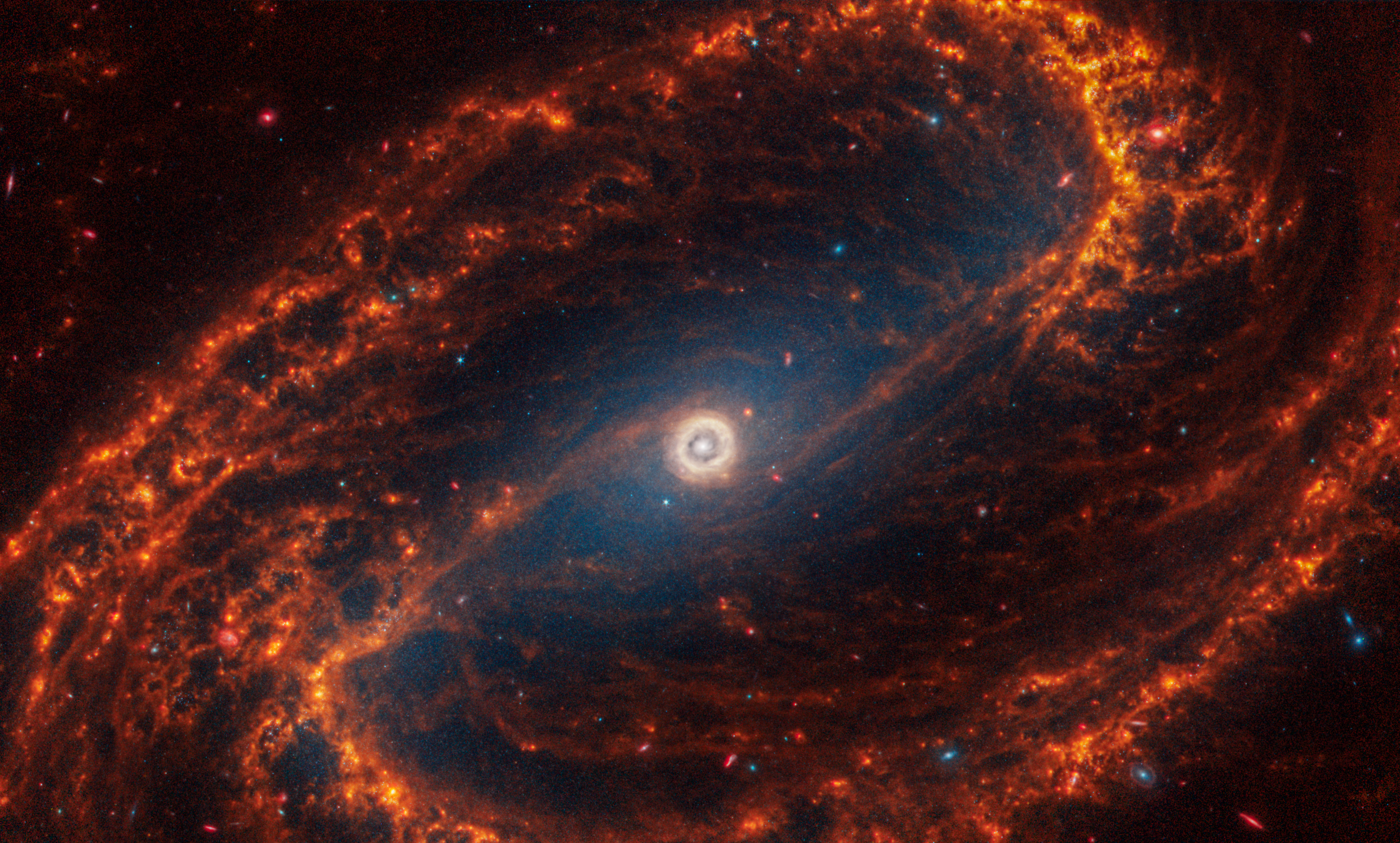
Webb and Hubble's Views of Spiral Galaxy NGC 1300
Face-on barred spiral galaxy, NGC 1300, is split diagonally in this image: The James Webb Space Telescope’s observations appear at top left, and the Hubble Space Telescope’s on bottom right. Webb and Hubble’s images show a striking contrast, an inverse of darkness and light....
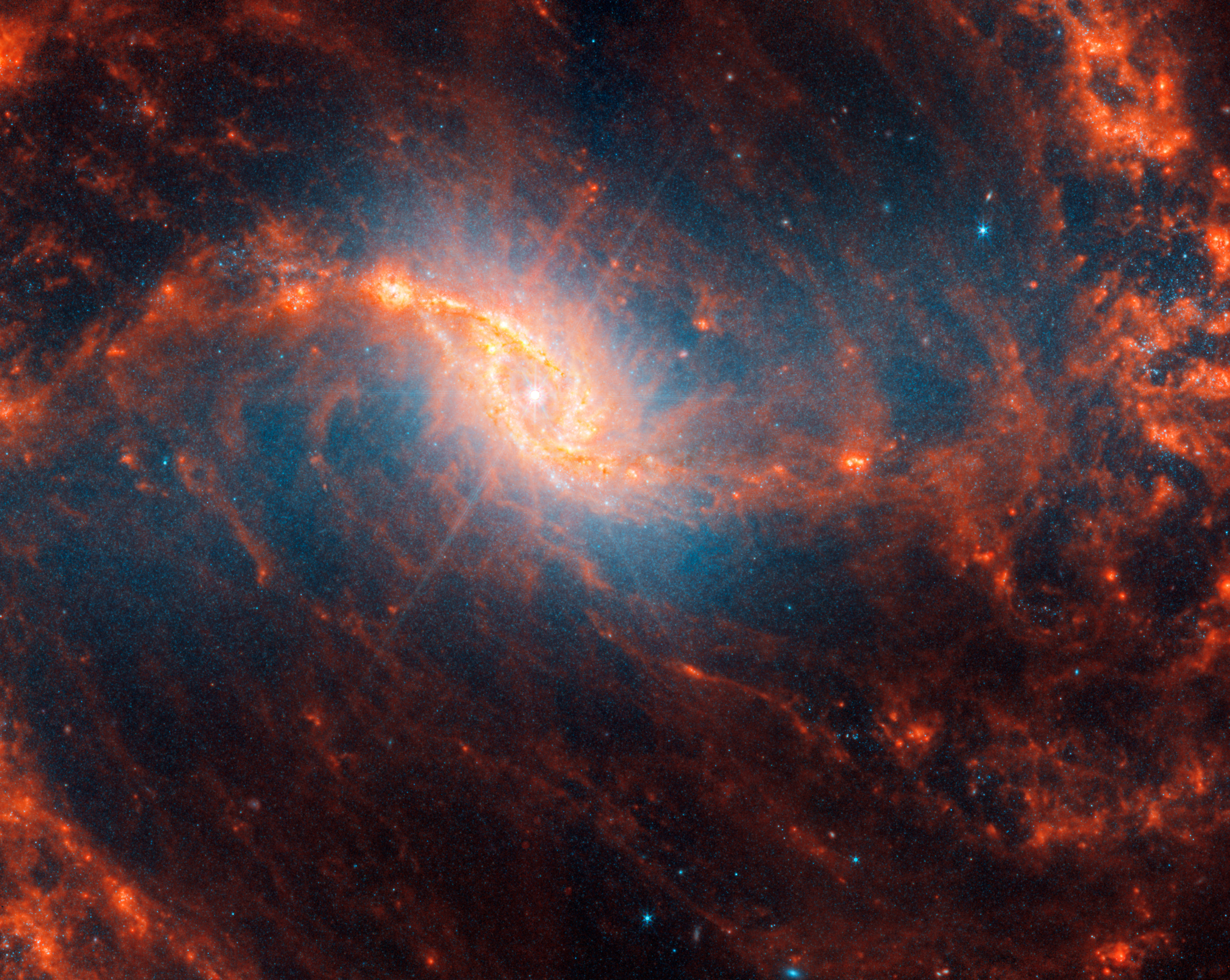
Webb and Hubble's Views of Spiral Galaxy NGC 1365
Barred spiral galaxy, NGC 1365, is split diagonally in this image: The James Webb Space Telescope’s observations appear on bottom right, and the Hubble Space Telescope’s at top left. Webb and Hubble’s images show a striking contrast, an inverse of darkness and light. Why? Webb’s...

Webb and Hubble's Views of Spiral Galaxy NGC 1385
Face-on spiral galaxy, NGC 1385, is split diagonally in this image: The James Webb Space Telescope’s observations appear at top left, and the Hubble Space Telescope’s on bottom right. Webb and Hubble’s images show a striking contrast, an inverse of darkness and light. Why?...
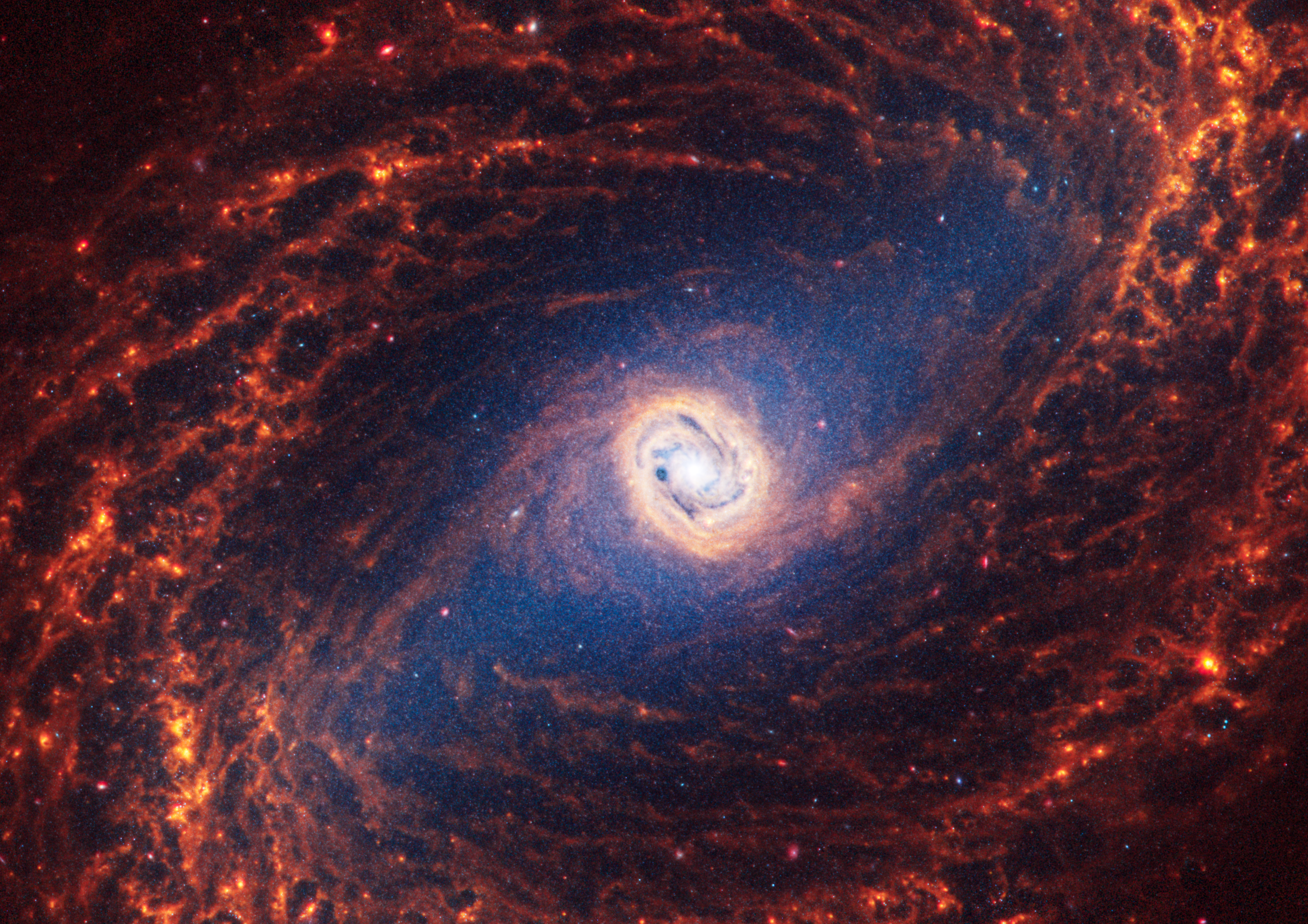
Webb and Hubble's Views of Spiral Galaxy NGC 1433
Face-on barred spiral galaxy, NGC 1433, is split diagonally in this image: The James Webb Space Telescope’s observations appear at top left, and the Hubble Space Telescope’s on bottom right. Webb and Hubble’s images show a striking contrast, an inverse of darkness and light....
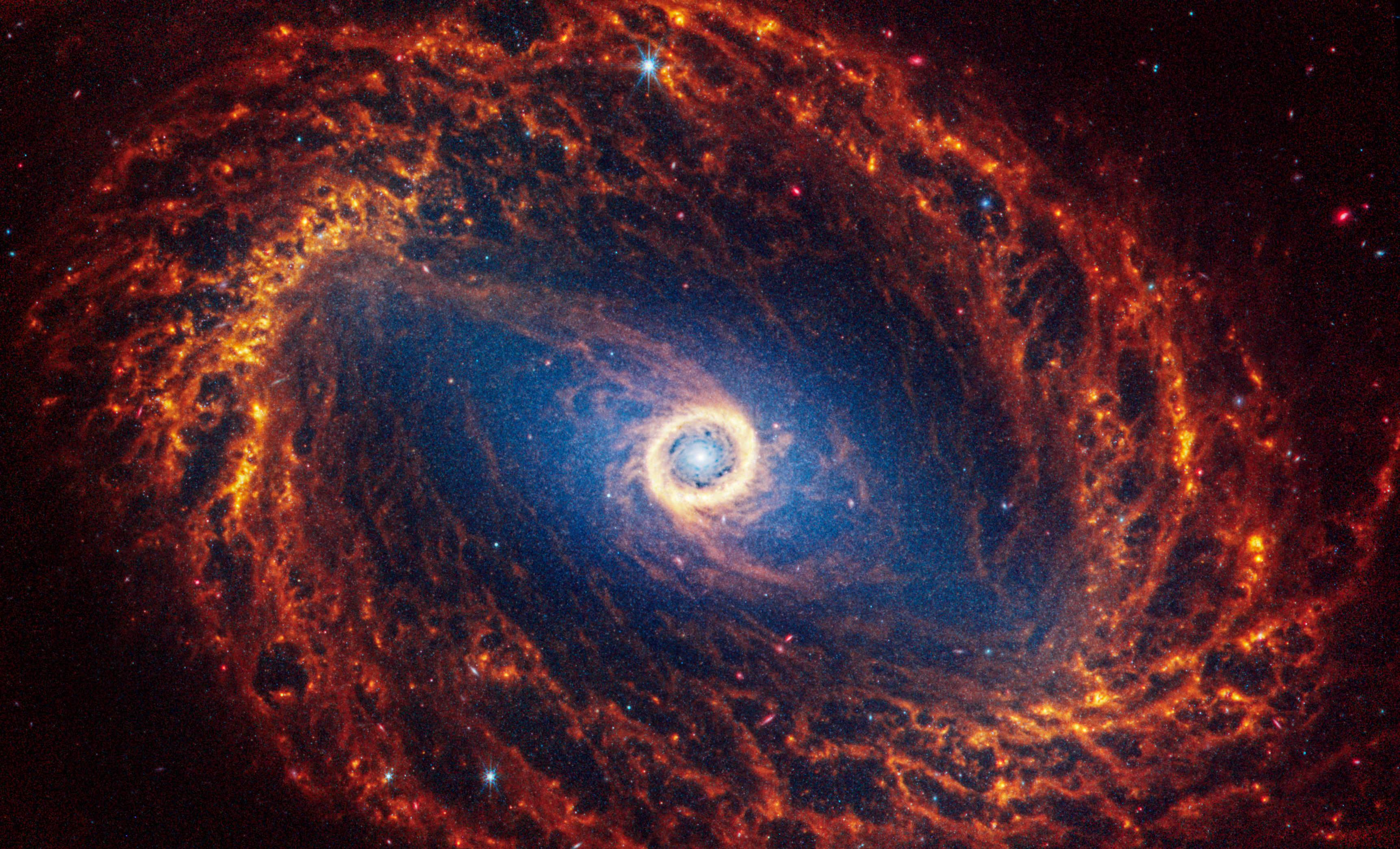
Webb and Hubble's Views of Spiral Galaxy NGC 1512
Face-on barred spiral galaxy, NGC 1512, is split diagonally in this image: The James Webb Space Telescope’s observations appear at top left, and the Hubble Space Telescope’s on bottom right. Webb and Hubble’s images show a striking contrast, an inverse of darkness and light....
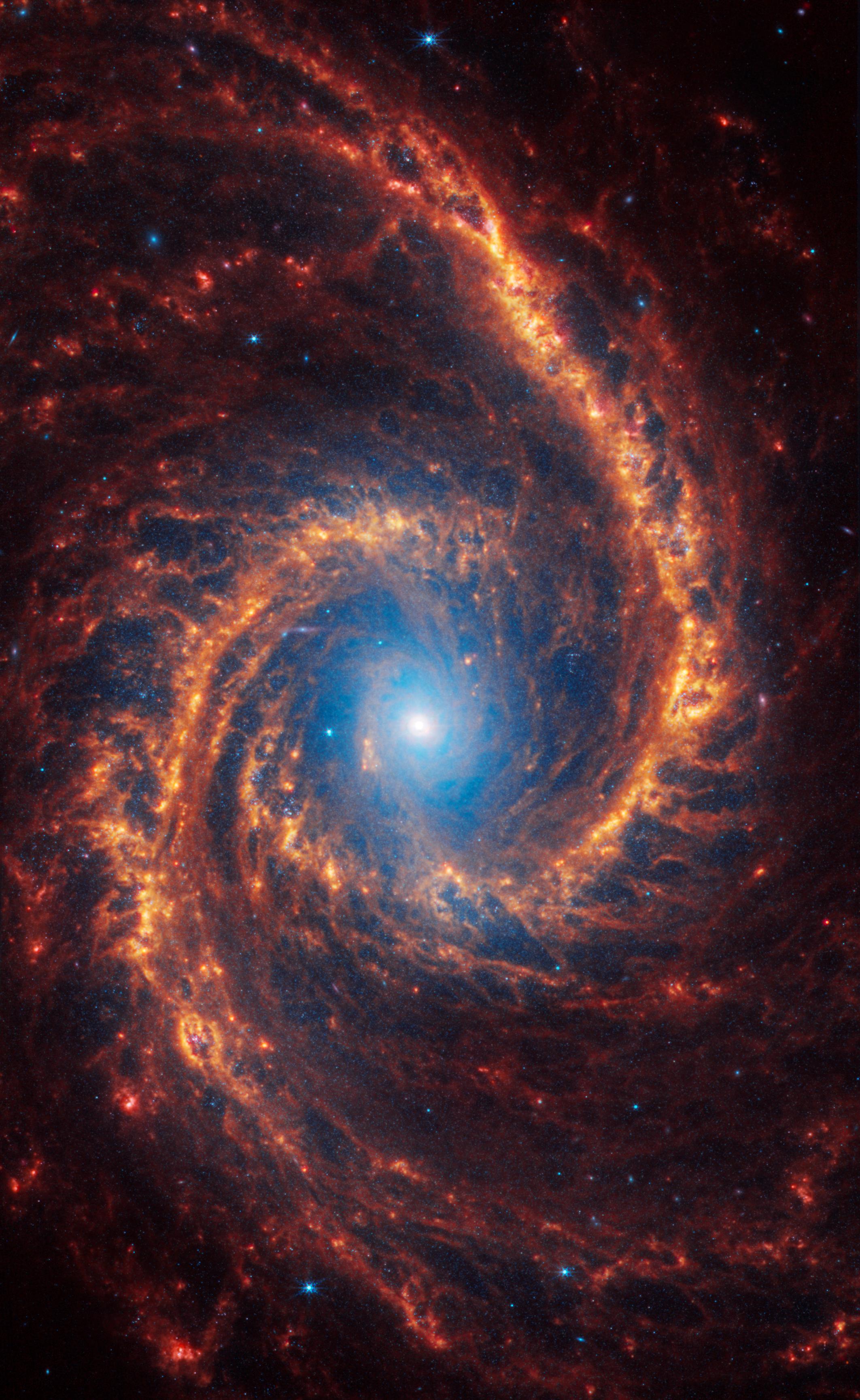
Webb and Hubble's Views of Spiral Galaxy NGC 1566
Face-on spiral galaxy, NGC 1566, is split diagonally in this image: The James Webb Space Telescope’s observations appear on bottom right, and the Hubble Space Telescope’s at top left. Webb and Hubble’s images show a striking contrast, an inverse of darkness and light. Why?...
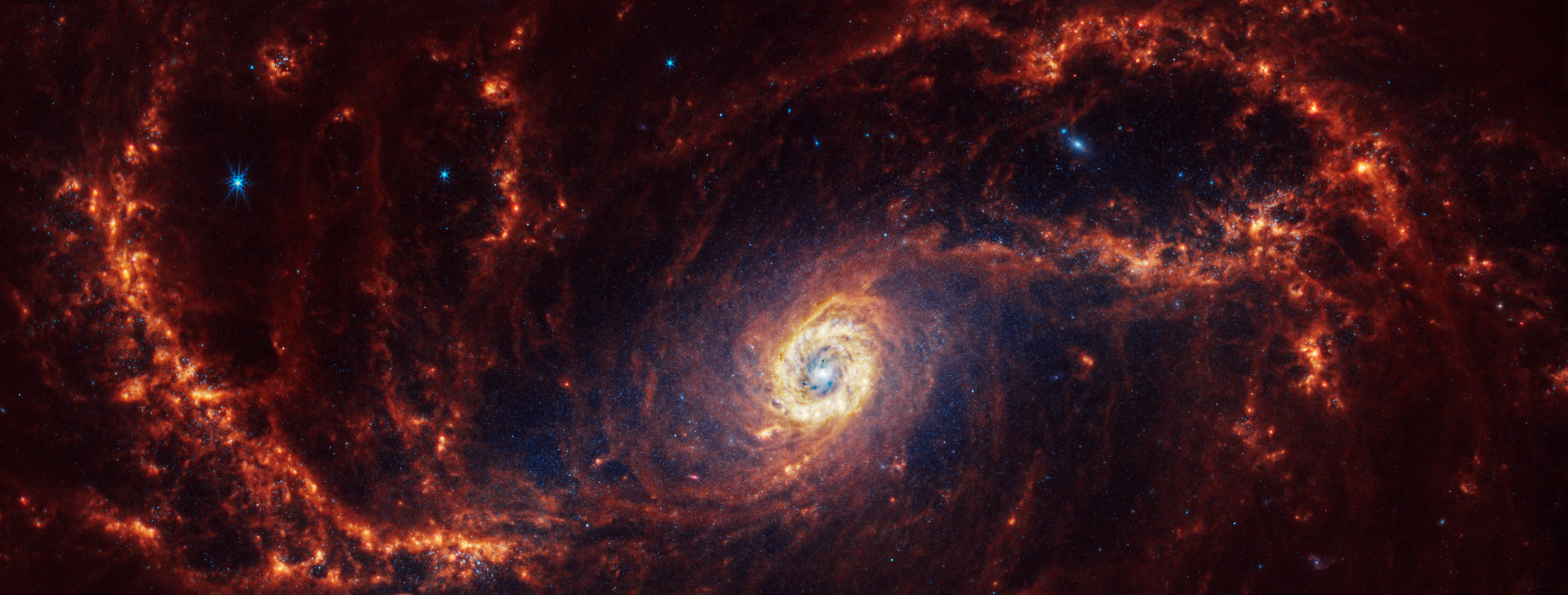
Webb and Hubble's Views of Spiral Galaxy NGC 1672
Face-on spiral galaxy, NGC 1672, is split diagonally in this image: The James Webb Space Telescope’s observations appear on bottom right, and the Hubble Space Telescope’s at top left. Webb and Hubble’s images show a striking contrast, an inverse of darkness and light. Why?...
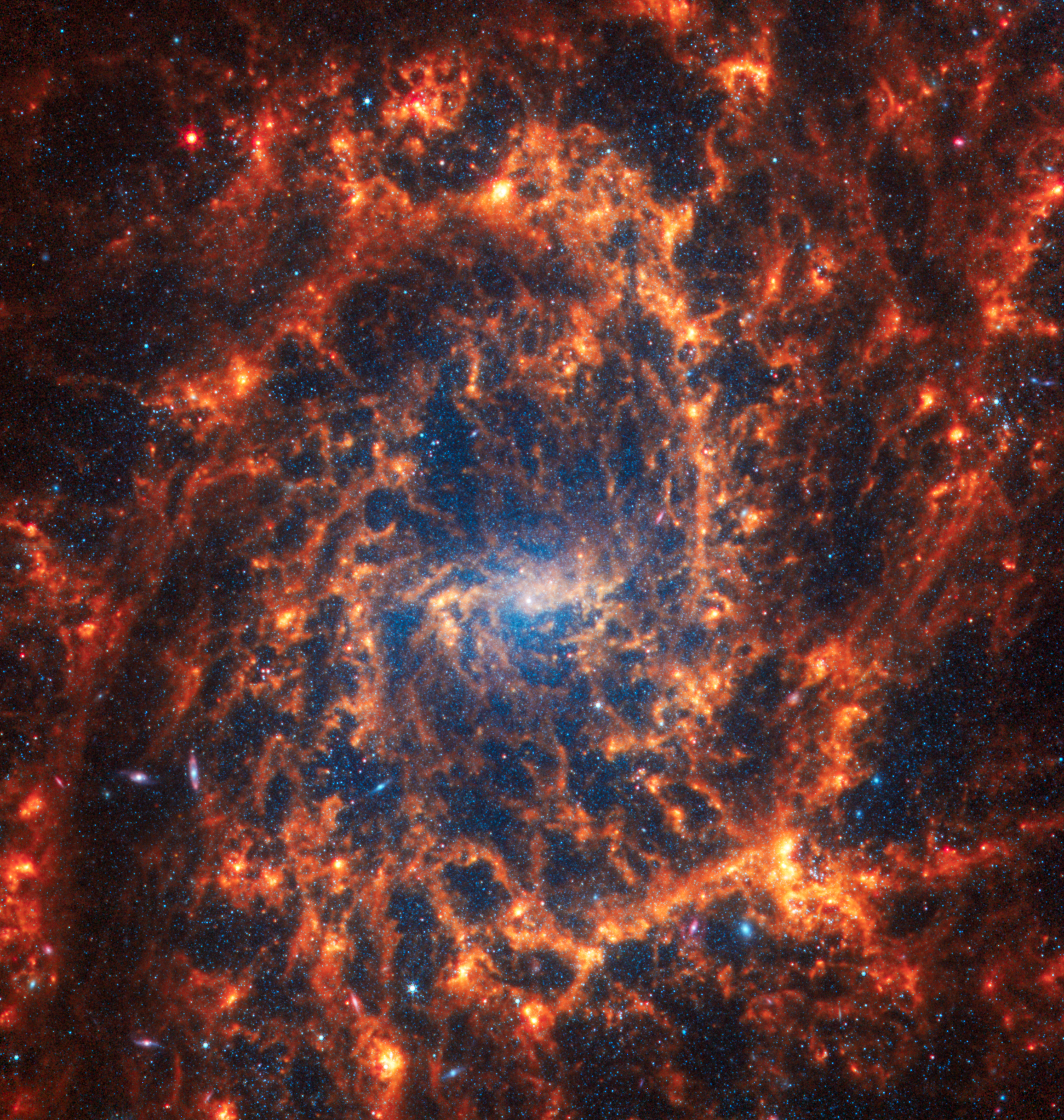
Webb and Hubble's Views of Spiral Galaxy NGC 2835
Face-on spiral galaxy, NGC 2835, is split diagonally in this image: The James Webb Space Telescope’s observations appear at top left, and the Hubble Space Telescope’s on bottom right. Webb and Hubble’s images show a striking contrast, an inverse of darkness and light. Why?...
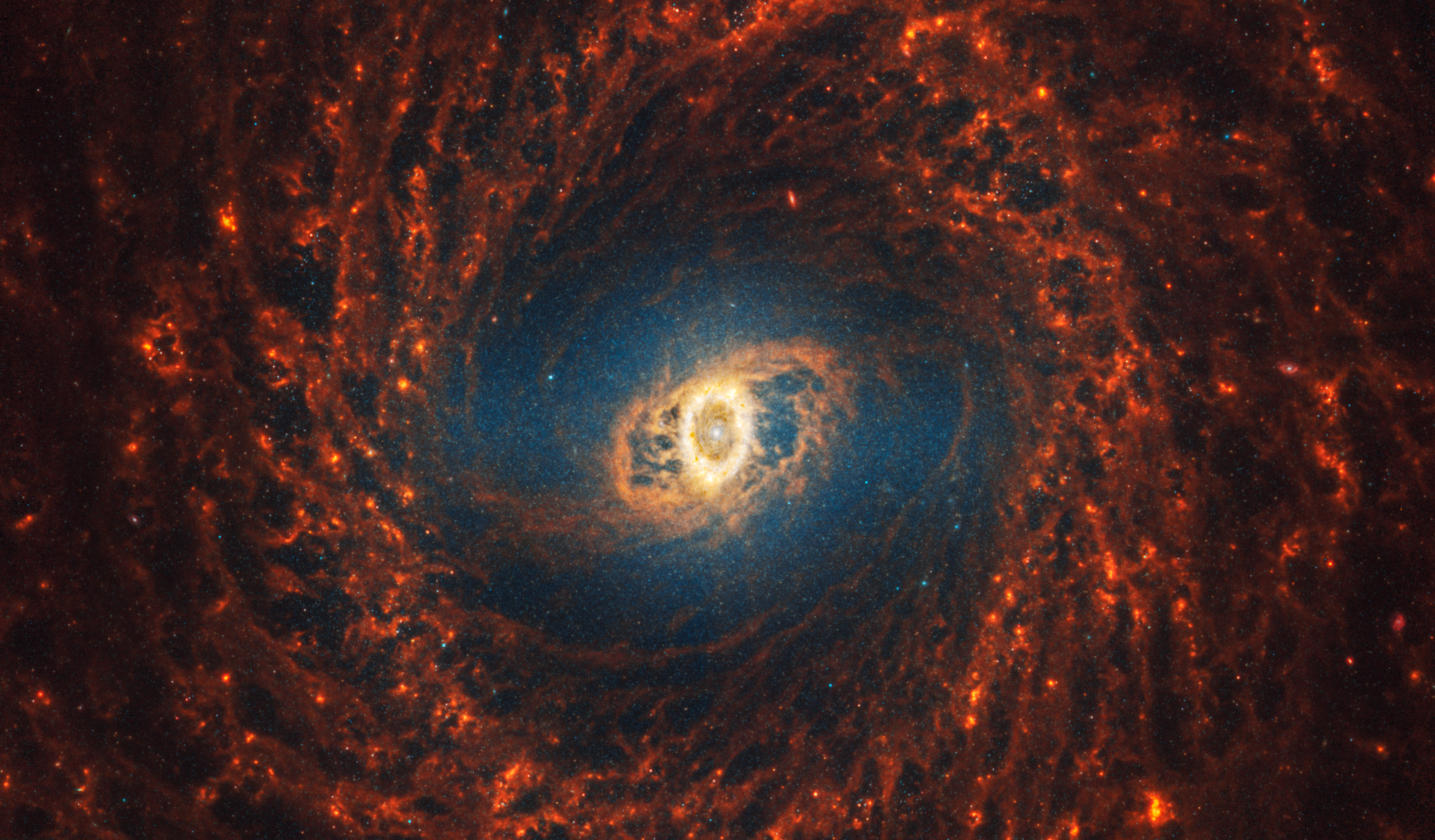
Webb and Hubble's Views of Spiral Galaxy NGC 3351
Face-on spiral galaxy, NGC 3351, is split diagonally in this image: The James Webb Space Telescope’s observations appear on bottom right, and the Hubble Space Telescope’s at top left. Webb and Hubble’s images show a striking contrast, an inverse of darkness and light. Why?...
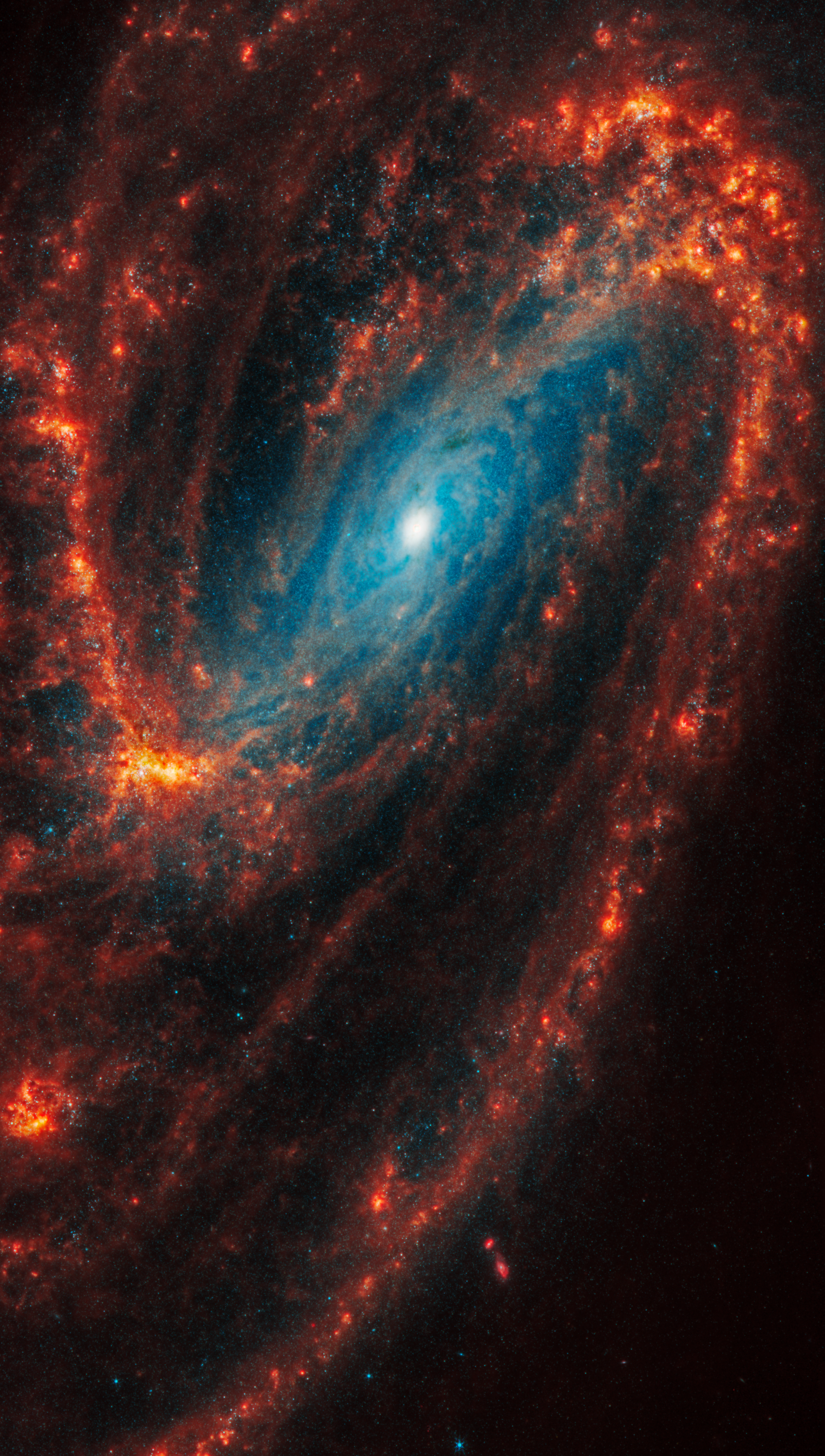
Webb and Hubble's Views of Spiral Galaxy NGC 3627
Face-on spiral galaxy, NGC 3627, is split diagonally in this image: The James Webb Space Telescope’s observations appear on bottom right, and the Hubble Space Telescope’s at top left. Webb and Hubble’s images show a striking contrast, an inverse of darkness and light. Why?...
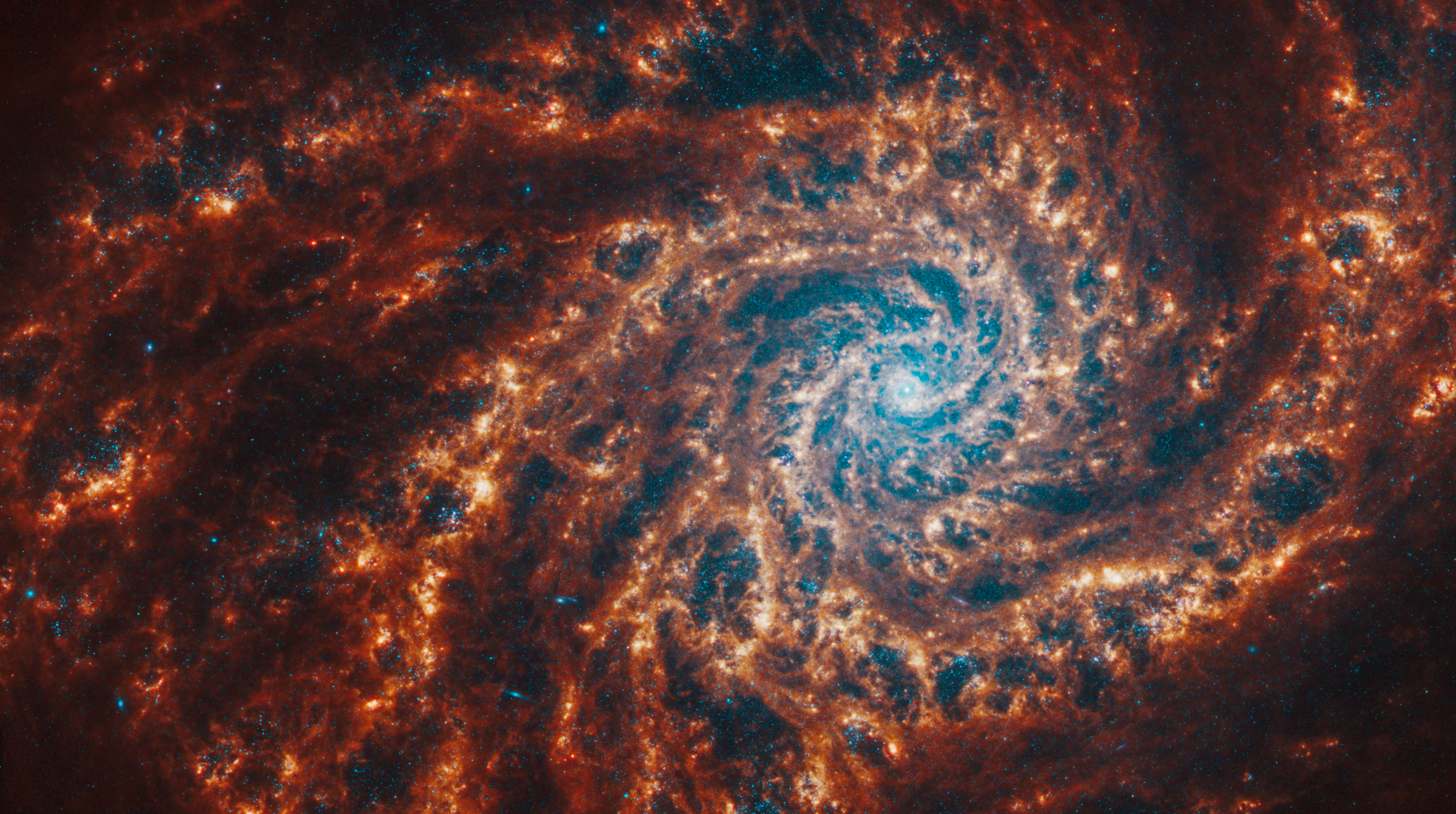
Webb and Hubble's Views of Spiral Galaxy NGC 4254
Face-on spiral galaxy, NGC 4254, is split diagonally in this image: The James Webb Space Telescope’s observations appear at top left, and the Hubble Space Telescope’s on bottom right. Webb and Hubble’s images show a striking contrast, an inverse of darkness and light. Why?...
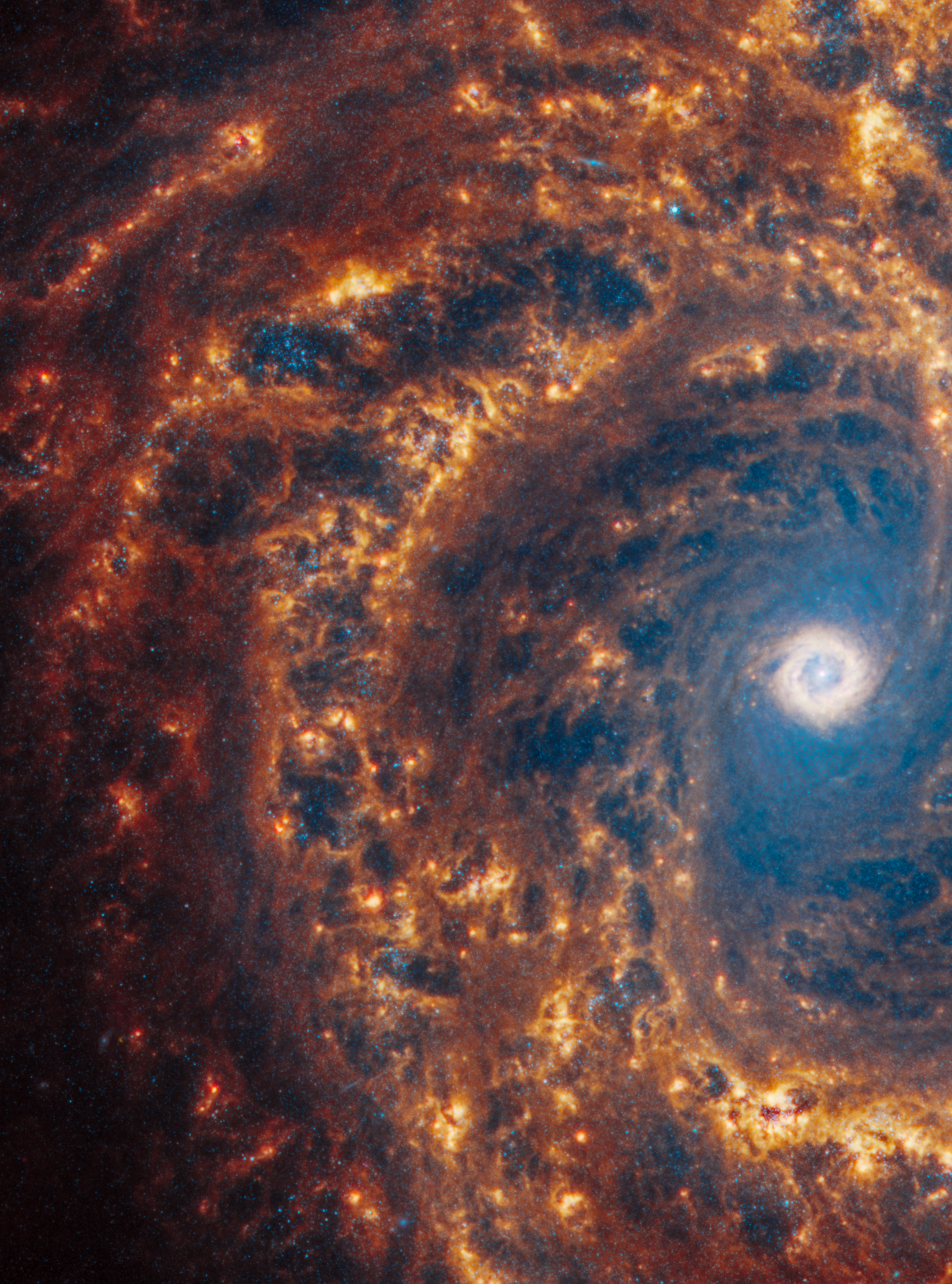
Webb and Hubble's Views of Spiral Galaxy NGC 4303
Face-on spiral galaxy, NGC 4303, is split diagonally in this image: The James Webb Space Telescope’s observations appear at top left, and the Hubble Space Telescope’s on bottom right. Webb and Hubble’s images show a striking contrast, an inverse of darkness and light. Why?...
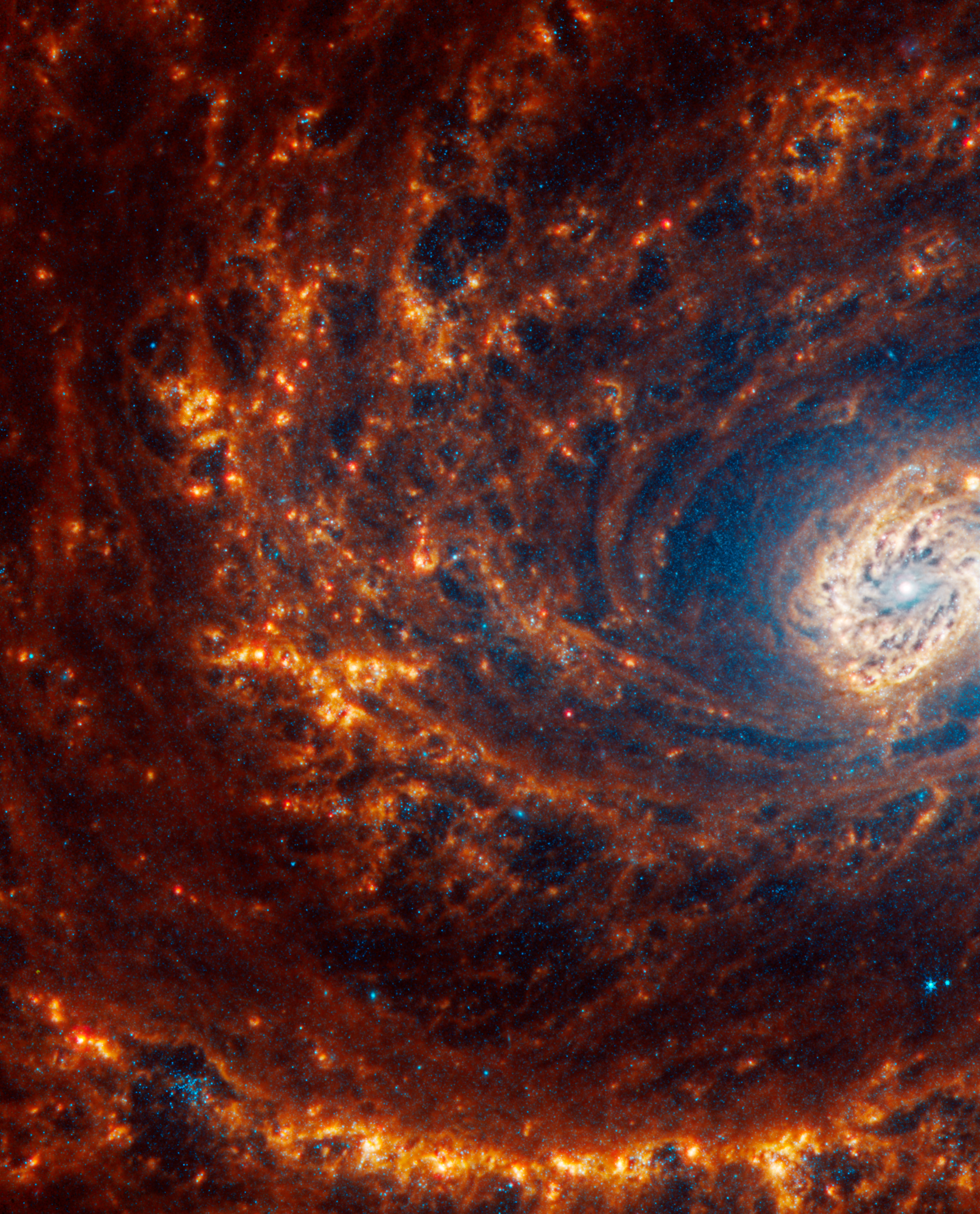
Webb and Hubble's Views of Spiral Galaxy NGC 4321
Face-on spiral galaxy, NGC 4321, is split diagonally in this image: The James Webb Space Telescope’s observations appear at bottom left, and the Hubble Space Telescope’s on top right. Webb and Hubble’s images show a striking contrast, an inverse of darkness and light. Why?...
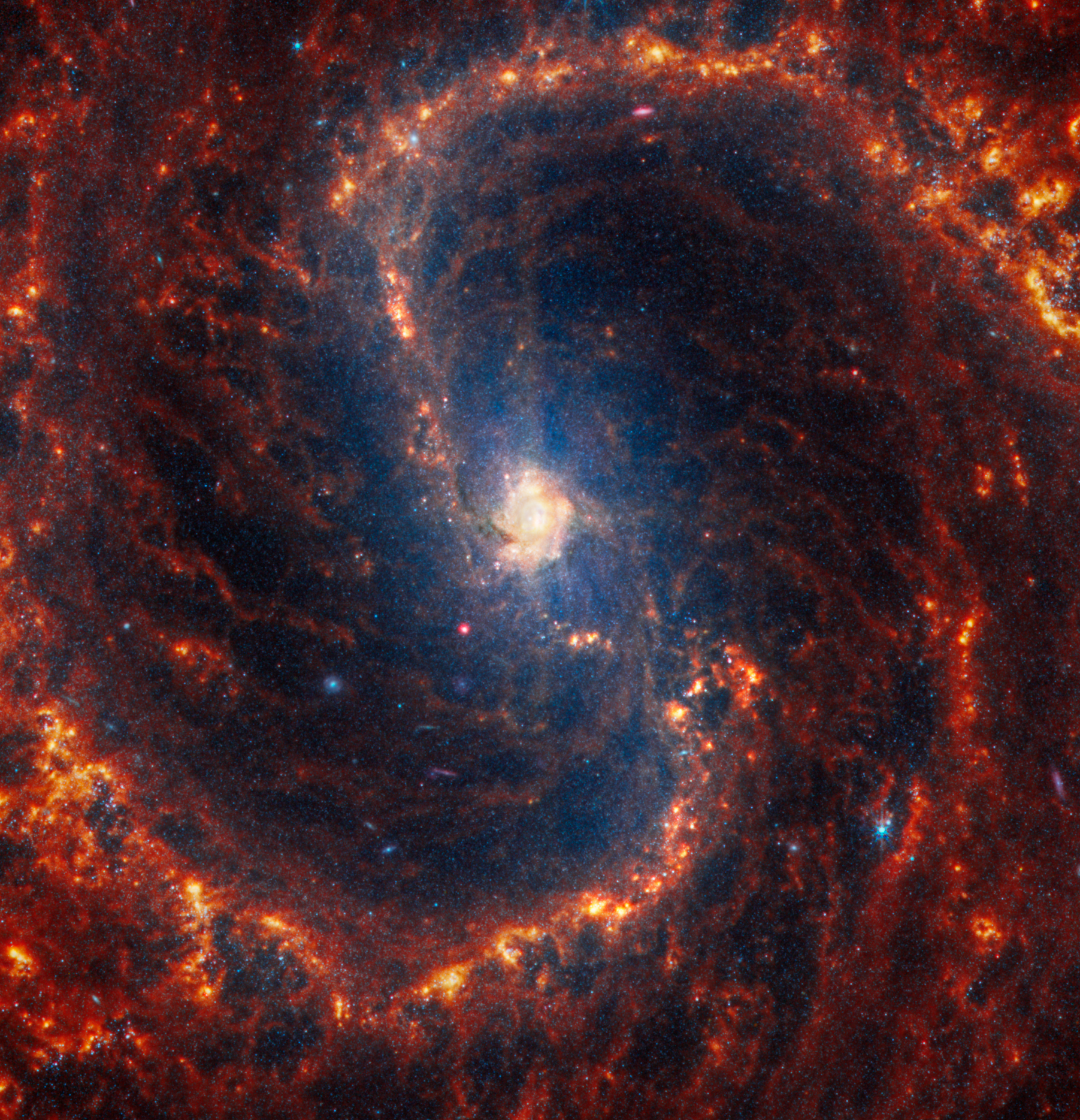
Webb and Hubble's Views of Spiral Galaxy NGC 4535
Face-on spiral galaxy, NGC 4535, is split diagonally in this image: The James Webb Space Telescope’s observations appear at bottom left, and the Hubble Space Telescope’s on top right. Webb and Hubble’s images show a striking contrast, an inverse of darkness and light. Why?...
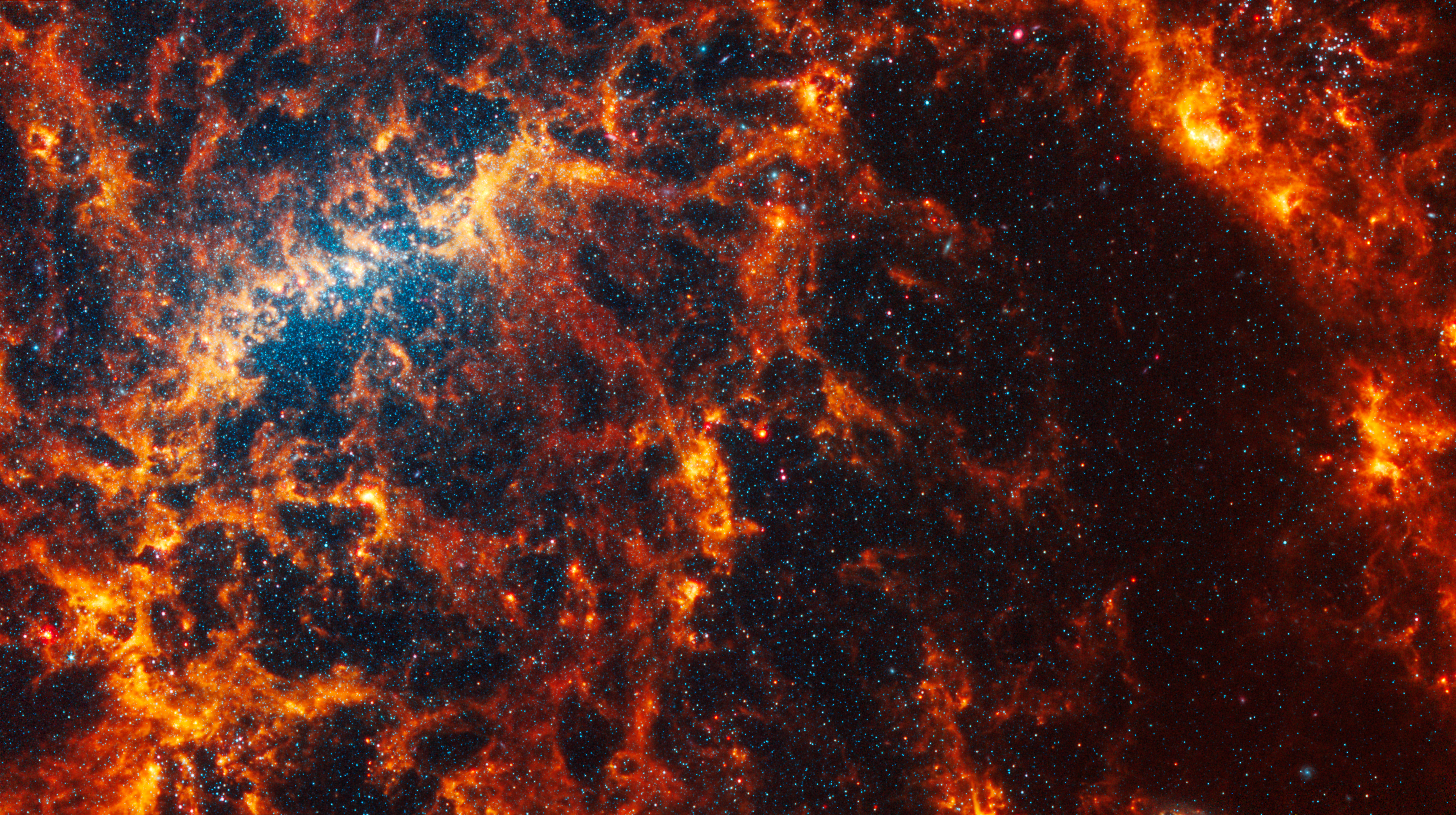
Webb and Hubble's Views of Spiral Galaxy NGC 5068
Face-on spiral galaxy, NGC 5068, is split diagonally in this image: The James Webb Space Telescope’s observations appear on bottom right, and the Hubble Space Telescope’s at top left. Webb and Hubble’s images show a striking contrast, an inverse of darkness and light. Why?...
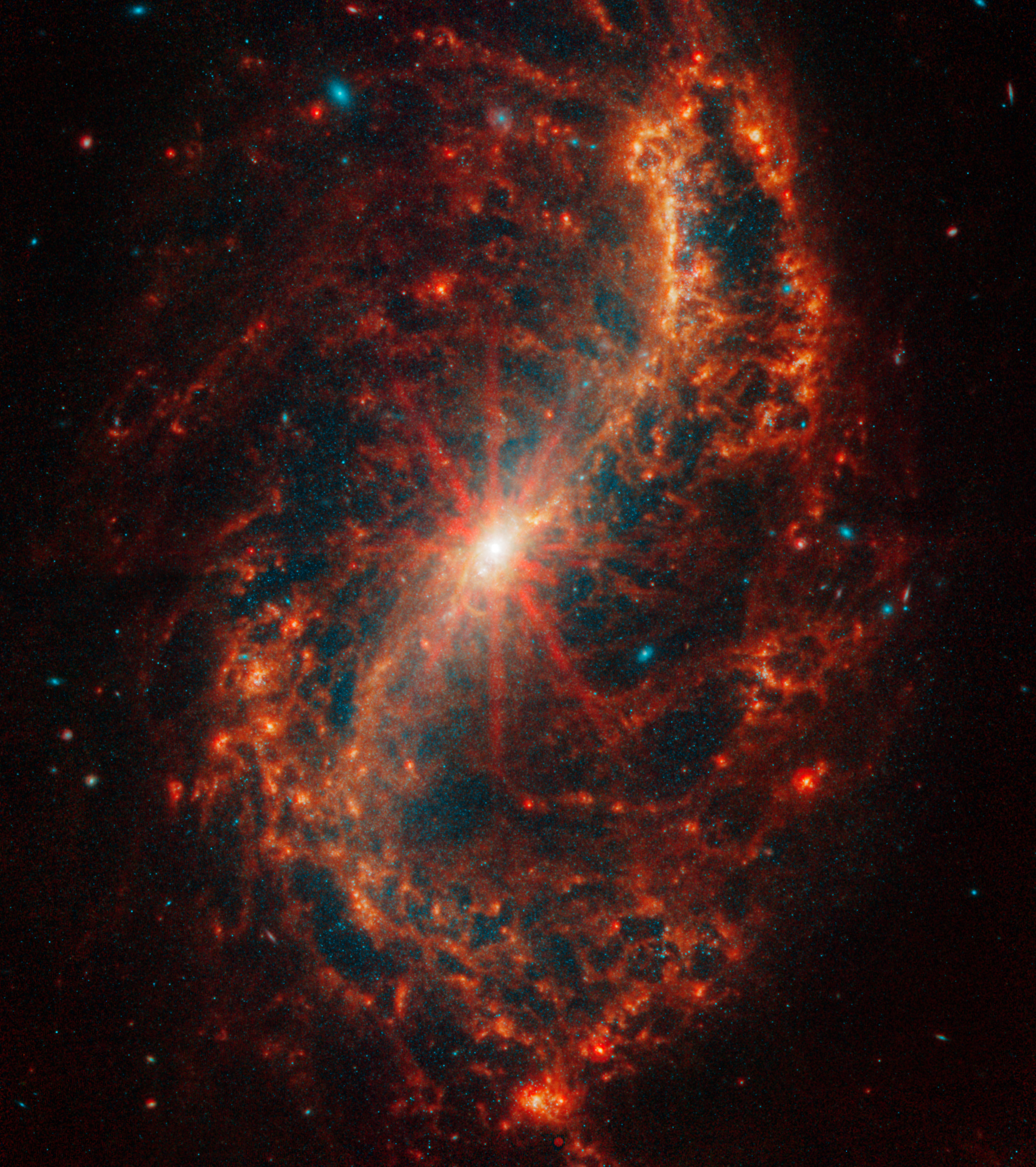
Webb and Hubble's Views of Spiral Galaxy NGC 7496
Face-on spiral galaxy, NGC 7496, is split diagonally in this image: The James Webb Space Telescope’s observations appear on bottom right, and the Hubble Space Telescope’s at top left. Webb and Hubble’s images show a striking contrast, an inverse of darkness and light. Why?...
Share
Details
Laura Betz
NASA’s Goddard Space Flight Center
Greenbelt, Maryland
laura.e.betz@nasa.gov
NASA, ESA, CSA, STScI, PHANGS Team, Janice Lee (STScI), Thomas Williams (Oxford)
Elizabeth Wheatley (STScI)

